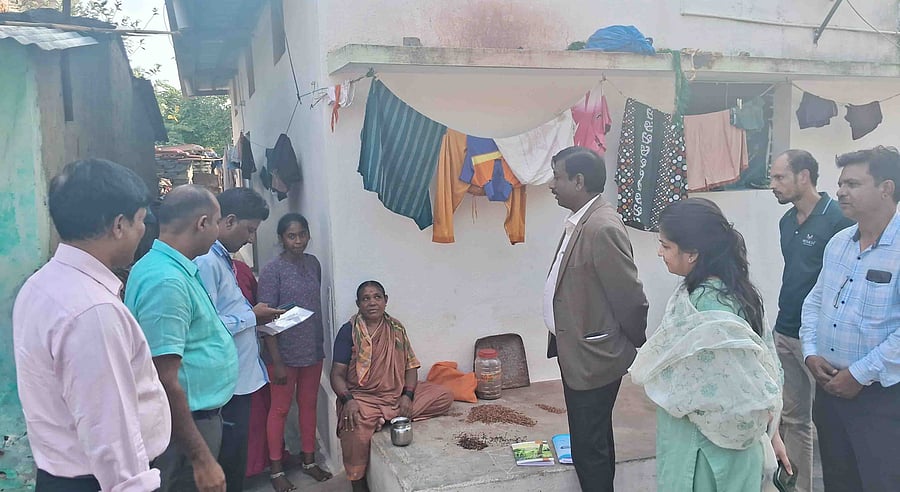
Credit: Special arrangement
While the Justice Nagamohan Das Commission’s report on internal reservation for Scheduled Castes (SCs) has sought to address historical inequities within SCs, its fate hangs in the balance till the special Cabinet meeting on August 16.
Internal reservation has been a decades-long demand of the SC (left)/Madiga community. The Supreme Court’s landmark ruling on August 1, 2024, empowered states to provide internal reservation.
As per the Das Commission report, the 17% reservation basket for SCs has been divided amongst five categories. Interestingly, Madiga and 17 affiliated castes were found to be numerically more (36.69 lakh) and more backward than the SC (Right)/Holeya and 16 affiliated castes (30.08 lakh). As many as 59 ‘most backward communities’ and AK, AD and AA communities have been given 1% each.
The Holeyas have predominantly been landless agricultural labourers. They also work as Neergantis (water overseers) and bugle blowers. On the other hand, the Madigas are into leathering and manual scavenging (safai karmacharis).
Holeyas are predominantly found in Mysuru, Chamarajanagar, Mandya, Kolar, Bengaluru, Bengaluru South (Ramanagar), Kalaburagi, Bidar and Vijayapura districts, while Madigas are dominant in Raichur, Koppal, Ballari, Vijayanagar, Bagalkot, Davangere, Chitradurga, Chikkaballapur and Tumakuru.
Experts have noted that since Holeyas are dominant in old Mysuru, they have benefited more from affirmative action initiated by then Mysuru king Nalwadi Krishnaraja Wadiyar.
On the other hand, the Madigas were dominant in regions which either came under direct British (Ballari and Vijayanagar) and Nizam (Raichur, Koppal and so on) rule. Thus, experts feel they have lacked development opportunities.
However, both communities are more backward than the Lambani, Bhovi, Korma and Korcha (‘touchable’) communities, which entered the SC list in Karnataka in 1977.
As per 2024-25 CET exam statistics, 1,119 students from Banjara/Lambani community got seats in professional courses, while 830 Bhovis got seats. The corresponding figure for Holeyas was 576, while 493 Madigas got the seats.
Even in medical courses, Banjaras bagged 222 seats, followed by Bhovis and Holeyas, who bagged 72 seats each and Madigas 61.
Caste affinity over party loyalty?
These findings have led to a peculiar situation, where leaders across political parties are realigning along caste lines rather than party affiliations. While SC (left) leaders in both Congress and BJP are happy, the SC (right) group has expressed reservations.
Congress’ senior SC (left) leader L Hanumanthaiah told DH: “These statistics are right, and show that Madigas are more populous than other SC communities. The commission has considered population and backwardness, and has given more accurate data than the 1931 caste census, Havanur Commission report and the 2011 census”.
BJP leader and former union minister A Narayanaswamy also welcomed the spirit of the report. He told DH that the survey was a “ray of hope” for the Madigas and opined that the government would decide in favour of the report in the special Cabinet meeting. However, he threatened that the Madigas would hit the streets if the government failed to implement the findings.
Traditionally, SC (right) has supported Congress en-bloc, while Madigas also supported BJP also.
While Congress’ SC (right) leaders are fine with internal reservation, they have opposed grouping the Paraiyan/Paraya community (1,61,164) in group ‘B’ with Madigas, arguing that they are sociologically more similar to the Holeyas. Parayas are predominantly found in Tamil Nadu.
Though Ministers Dr H C Mahadevappa, G Parameshwara and Priyank Kharge are all from SC (right), community leaders are miffed that the Madigas have been recommended for more reservation.
They argue that since Holeyas are more urban-based than Madigas, the lack of proper enumeration in Bengaluru has hit them more.
These sentiments were echoed by BJP’s SC (right) face and Leader of the Opposition in the Legislative Council Chalavadi Narayanaswamy.
“Dalit leaders in the Congress don’t care about the shrill campaign that SC (left) is more populous. As a result, that version has become established now. Rightfully, the SC (right) should get the highest reservation, followed by SC (left), and finally ‘touchable’ Dalits”.
The ‘touchable’ community is also miffed with the 4% reservation it got. When the previous BJP government proposed to alter the reservation matrix by providing 6% to SC (left), 5.5% to SC (right) and 4.5% to ‘touchables,’ the latter had vehemently opposed it, even stoning former chief minister and BJP veteran B S Yediyurappa’s residence.
Congress’ Prakash Rathod (a leader of the Banjara community, which comes under the ‘touchables’ category) said: “We aren’t happy with it, as we feel our population is much more than 28.34 lakh. We have conveyed our opinions to the CM and DCM, and have convened a meeting on Tuesday of community leaders from across the political spectrum”.
All eyes will be on the Cabinet’s decision, as CM Siddaramaiah will have to manoeuvre through a political quagmire, balancing between social justice and political equations.
